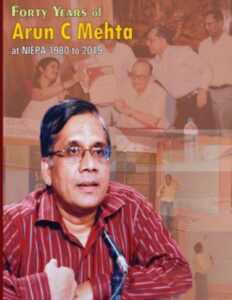Introductory
All About Right to Education (RTE Act 2009)
1.1 Education has continued to evolve, diversify and extend its reach and coverage since the dawn of human history. Every country develops its system of education to express and promote its unique socio-cultural identity and also to meet the challenges of the times. There are moments in history when a new direction has to be given to an age-old process. That moment is today.
1.2 The country has reached a stage in its economic and technical development when a major effort must be made to derive the maximum benefit from the assets already created and to ensure that the fruits of change reach all sections. Education is the highway to that goal.
1.3 With this aim in view, the Government of India announced in January 1985 that a new Education Policy would be formulated for the country. A comprehensive appraisal of the existing educational scene was made followed by a countrywide debate. The views and suggestions received from different quarters were carefully studied.
THE 1968 EDUCATION POLICY AND AFTER
1.4 The National Policy of 1968 marked a significant step in the history of education in post-Independence India. It aimed to promote national progress, a sense of common citizenship and culture, and to strengthen national integration. It laid stress on the need for a radical reconstruction of the education system, to improve its quality at all stages, and gave much greater attention to science and technology, the cultivation of moral values and a closer relation between education and the life of the people.
1.5 Since the adoption of the 1968 Policy, there has been considerable expansion in educational facilities all over the country at all levels. More than 90 per cent of the countrys rural habitations now have schooling facilities within a radius of one kilometer. There has been sizeable augmentation of facilities at other stages also.
1.6 Perhaps the most notable development has been the acceptance of a common structure of education throughout the country and the introduction of the 10+2+3 system by most States. In the school curricula, in addition to laying down a common scheme of studies for boys and girls, science and mathematics were incorporated as compulsory subjects and work experience assigned a place of importance.
1.7 A beginning was also made it restructuring of courses at the undergraduate level. Centres of Advanced Studies were set up for post-graduate education and research. And we have been able to meet our requirements of educated manpower.
1.8 While these achievements are impressive by themselves, the general formulations incorporated in the 1968 Policy did not, however, get translated into a detailed strategy of implementation, accompanied by the assignment of specific responsibilities and financial and organizational support. As a result, problems of access, quality, quantity, utility and financial outlay, accumulated over the years, have now assumed such massive proportions that they must be tackled with the utmost urgency.
1.9 Education in India stands at the crossroads today. Neither normal linear expansion nor the existing pace and nature of improvement can meet the needs of the situation.
1.10 In the Indian way of thinking, a human being is a positive asset and a precious national resource which needs to be cherished, nurtured and developed with tenderness and care, coupled with dynamism. Each individuals growth presents a different range of problems and requirements, at every stage from the womb to the tomb. The catalytic action of Education in this complex and dynamic growth process needs to be planned meticulously and executed with great sensitivity.
1.11 India#s political and social life is passing through a phase, which poses the danger of erosion to long-accepted values. The goals of secularism, socialism, democracy and professional ethics are coming under increasing strain.
1.12 The rural areas, with poor infrastructure and social services, will not get the benefit of trained and educated youth, unless rural – urban disparities are reduced and determined measures are taken to promote diversification and dispersal of employment opportunities.
1.13 The growth of our population needs to be brought down significantly over the coming decades. The largest single factor that could help achieve this is the spread of literacy and education among women.
1.14 Life in the coming decades is likely to bring new tensions together with unprecedented opportunities. To enable the people to benefit in the new environment will require new designs of human resource development. The coming generations should have the ability to internalize new ideas constantly and creatively. They have to be imbued with a strong commitment to humane values and to social justice. All this implies better education.
1.15 Besides, a variety of new challenges and social needs make it imperative for the Government to formulate and implement a new Education Policy for the country. Nothing short of this will meet the situation.
Aligning SSA Norm with the RTE Act 2009





